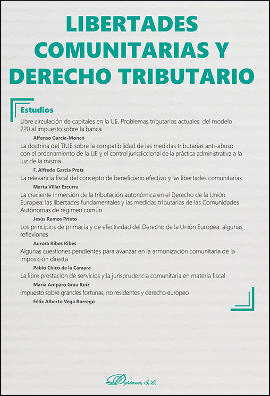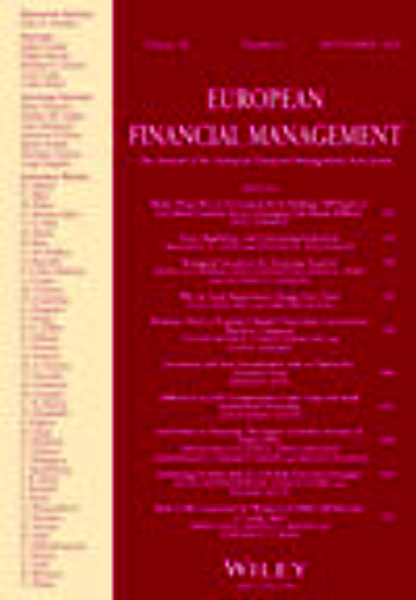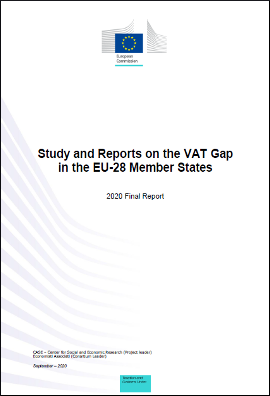Tax Law (Books and Journals)
1331 results for Tax Law (Books and Journals)
-
 Libertades comunitarias y derecho tributario, Monográfico revista Nueva Fiscalidad, 2023
by:
Dykinson, 2023
Libertades comunitarias y derecho tributario, Monográfico revista Nueva Fiscalidad, 2023
by:
Dykinson, 2023
-
 European Financial Management
From No. 1-1, March 1995
to No. 26-4, September 2020
Wiley, 2021
European Financial Management
From No. 1-1, March 1995
to No. 26-4, September 2020
Wiley, 2021
-
 Fiscalidad de las reorganizaciones empresariales en la Unión Europea. Estudio de la Directiva Fiscal de Fusiones
by:
Marcial Pons, 2021
Fiscalidad de las reorganizaciones empresariales en la Unión Europea. Estudio de la Directiva Fiscal de Fusiones
by:
Marcial Pons, 2021
-
 Study and reports on the VAT gap in the EU-28 Member States. 2020 final report
by:
European Union Publications Office, 2020
Study and reports on the VAT gap in the EU-28 Member States. 2020 final report
by:
European Union Publications Office, 2020
-
 La armonización del impuesto sobre hidrocarburos en la Unión Europea
by:
Dykinson, 2014
La armonización del impuesto sobre hidrocarburos en la Unión Europea
by:
Dykinson, 2014
-
 Tratado de Aduanas e Impuestos Especiales
by:
J.M. Bosch Editor, 2013
Tratado de Aduanas e Impuestos Especiales
by:
J.M. Bosch Editor, 2013
-
 Las cláusulas anti-abuso específicas tributarias frente a las libertades de circulación de la Unión Europea
by:
J.M. Bosch Editor, 2010
Las cláusulas anti-abuso específicas tributarias frente a las libertades de circulación de la Unión Europea
by:
J.M. Bosch Editor, 2010
-
 Reforma y armonización de la fiscalidad de los grupos societarios europeos
by:
J.M. Bosch Editor, 2009
Reforma y armonización de la fiscalidad de los grupos societarios europeos
by:
J.M. Bosch Editor, 2009
-
 Studi Tributari Europei
From No. 1, June 2009
to No. 1/2018, January 2018
Scuola Europea di Alti Studi Tributari, 2009
Studi Tributari Europei
From No. 1, June 2009
to No. 1/2018, January 2018
Scuola Europea di Alti Studi Tributari, 2009
-
 European Tax Studies
From No. 1, June 2009
to No. 1/2018, January 2018
Scuola Europea di Alti Studi Tributari, 2009
European Tax Studies
From No. 1, June 2009
to No. 1/2018, January 2018
Scuola Europea di Alti Studi Tributari, 2009
-
 Estudios Tributarios Europeos
From No. 1, June 2009
to No. 1/2018, January 2018
Scuola Europea di Alti Studi Tributari, 2009
Estudios Tributarios Europeos
From No. 1, June 2009
to No. 1/2018, January 2018
Scuola Europea di Alti Studi Tributari, 2009
- Sobre la actividad reciente, en materia tributaria, del TJUE en relación con las libertades comunitarias
- Libre circulación de capitales en la UE. Problemas tributarios actuales: del modelo 720 al impuesto sobre la banca
- La doctrina del TJUE sobre la compatibilidad de las medidas tributarias anti-abuso con el ordenamiento de la UE y el control jurisdiccional de la práctica administrativa a la luz de la misma
- La relevancia fiscal del concepto de beneficiario efectivo y las libertades comunitarias
- La creciente inmersión de la tributación autonómica en el Derecho de la Unión Europea: las libertades fundamentales y las medidas tributarias de las Comunidades Autónomas de régimen común
- Los principios de primacía y de efectividad del Derecho de la Unión Europea: algunas reflexiones
- Algunas cuestiones pendientes para avanzar en la armonización comunitaria de la imposición directa
- La libre prestación de servicios y la jurisprudencia comunitaria en materia fiscal
- Impuesto sobre grandes fortunas, no residentes y derecho europeo
- Normas de publicación
- Límites a la aplicación del régimen de neutralidad fiscal: la cláusula antiabuso contemplada en el Art. 15 de la directiva 2009/133/CE
- Conclusiones
- Bibliografía
- Prólogo
- Abreviaturas
- Introducción
- La creación de un régimen de neutralidad fiscal para las operaciones transfronterizas de reorganización empresarial
- La delimitación del ámbito de aplicación subjetivo de la directiva 2009/133/CE
- La delimitación del ámbito de aplicación objetivo de la directiva 2009/133/CE
- Medidas que integran el régimen de neutralidad fiscal configurado por la directiva 2009/133/CE
- Policy GAP measures for 2018
- Econometric analysis of VAT GAP determinants
- The potential impact of the coronavirus recession on the evolution of the VAT GAP
- Annex A. Methodological considerations
- Annex B. Statistical appendix
- Annex C. Additional graphs
- List of acronyms and abbreviations
- Executive summary
- Introduction
- Background: economic and policy context in 2018
Request a trial to view additional results
